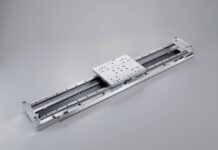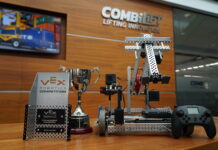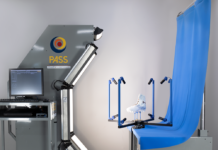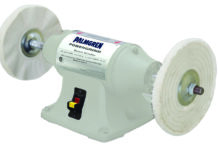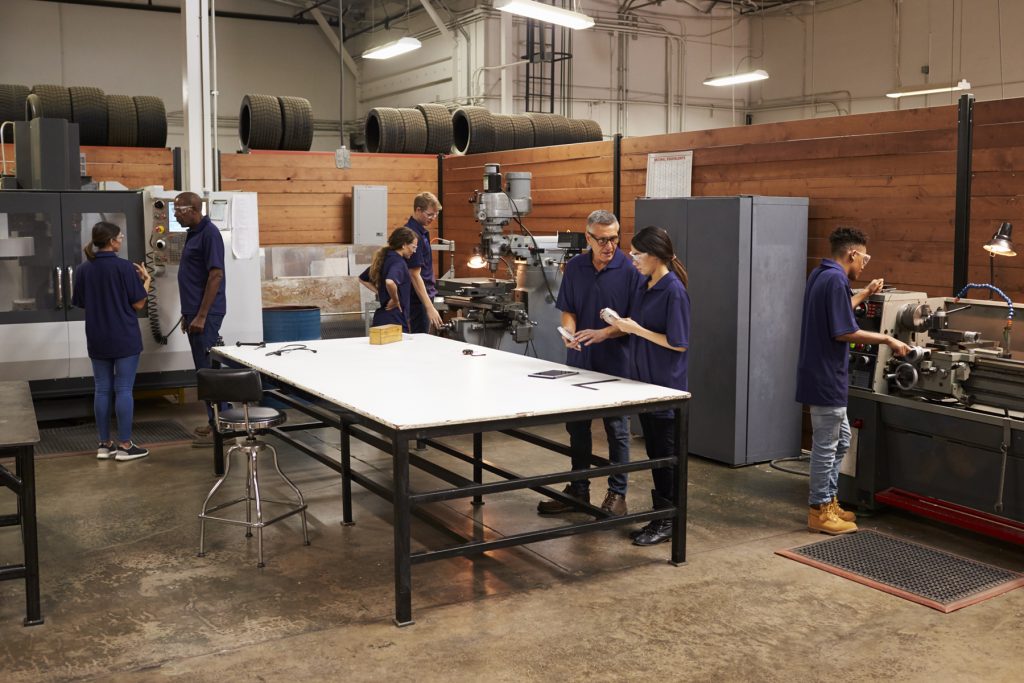 Industry 4.0 is transforming manufacturing. While companies work to integrate smart manufacturing into their operations, manufacturers of all sizes look and compete for scarce skilled talent to fill their workforce pipeline. Not only do manufacturers need to keep up the skills and capture the intellectual and institutional knowledge of their incumbent workers, they also need to draw in younger generations entering the workforce.
Industry 4.0 is transforming manufacturing. While companies work to integrate smart manufacturing into their operations, manufacturers of all sizes look and compete for scarce skilled talent to fill their workforce pipeline. Not only do manufacturers need to keep up the skills and capture the intellectual and institutional knowledge of their incumbent workers, they also need to draw in younger generations entering the workforce.
This generational diversity is driving a cultural shift as dramatically impactful as the technological shift underway. And if your company isn’t yet prepared to accommodate this cultural transformation, you’re behind: The time to prepare your business and adjust your culture is now.
As advanced technologies such as robotics and artificial intelligence, cybersecurity and additive manufacturing take center stage, workers of several generations are vital to the success of manufacturing enterprises.
How do we merge this multigenerational workforce and build cohesive and effective teams to make this cultural transition seamless?
For the first time, the manufacturing workforce comprises five generations — at once! On the shop floor, you may find workers from the silent generation (in their 70s poised for retirement), baby boomers, Gen Xers, millennials and the rising generation of Gen Z, with the oldest turning 22 this year.
Bridging the generation gap can help businesses address the workforce skills gap, because this cross-pollination of diverse thought, experience and approach strengthens their workforce and their business. In addition, broader diversity of age, race and gender creates different perspectives. While sometimes uncomfortable, this broad spectrum helps drive innovation, productivity and growth. If done right, companies will benefit from wide-ranging ideas and information that come from such a broad group of people, and employees will feel that their job and contributions matter.
Recommended solutions to the challenges inherent in this new multigenerational workforce are recruiting the right people, retaining incoming talent with new onboarding processes that include career pathways and providing a structured training program that can benefit everyone of all ages. Without leadership’s understanding of and commitment to making this cultural shift, manufacturers could be affected by annual turnover of up to 20-percent or higher.¹ With leadership’s buy-in, 70-percent of those employees who quit might have been retained.²
Tooling U-SME’s new report, “6 Ways to Build a Cohesive Multigenerational Manufacturing Workforce: Prepare for the Future – Now” has identified steps manufacturers can take to bring their cross generation of employees together, so they can benefit from the skills and knowledge of all:
Build a Culture that Respects Diversity
Change starts at the top. Senior management must commit to creating an environment where diverse views are expected and appreciated. This starts with the concept that everyone can teach — and learn.
When guidelines and expectations around values and behaviors within a company are clear, all generations thrive. Accountability becomes the benchmark for success — no matter what age the employee. Building a team of growth-oriented, diverse individuals encourages well-trained workers to learn from each other, build on different ideas and create new ones.
Foster Communication
It’s important to teach communication skills to help people get along, respectfully. In fact, older generations can be a valuable resource for helping younger generations build interpersonal skills.
To thrive, a company needs to provide generational training, highlighting the value of each generation so they can communicate better. Training all employees on the generational differences and similarities will make a more cohesive environment.
Younger employees have gained a reputation for being vocal and making their expectations obvious; however, it’s equally important to hear what older generations think. How would they suggest integrating early-career colleagues? Externally reinforcing the unique assets of each team member is also part of a leader’s job, and an important step in building a cohesive multigenerational team.
Create a Collaborative Environment
At their core, people want similar things. They want to be engaged. They want to feel valued. They want to grow and develop. Work styles may vary, and communication styles may differ, but creating a collaborative environment where all employees across the company have a chance to interact will break down stereotypes and misperceptions.
Here are some ideas for building connection and camaraderie among employees:
- Create comfort zones for people to sit and talk
- Give five-minute “social” breaks so workers can sit in these areas and check their social media
- Start an engagement team to plan company activities such as working at a pet shelter or creating a food drive for the homeless
- Introduce a mentorship model pairing a veteran employee with a younger employee, providing a reliable resource for insights about the company
Provide Regular and Immediate Feedback
Companies are adopting a new model for providing job performance feedback. This doesn’t have to be a long session. Just five minutes of clear, direct feedback on a regular basis will keep workers motivated and engaged.
Quarterly performance goals are far more practical for today’s business environment and are a more accurate reflection of employees’ overall performance. This approach may be surprising to long-term employees, but they will also benefit from quick feedback and will appreciate the opportunity to give it. Everyone will rejoice when they see that positive reinforcement through incentives is part of the package.
Build a Formal Training Program
Manufacturers can outline each step for an employee to reach the next career level, whether that level is a toolmaker or an engineer. Offering ongoing learning opportunities for all employees boosts their confidence and interaction while building loyalty, morale and productivity.
Ensure All Feel Invested in the Company
All generations want to share ideas and show what they can do — they may just approach it differently. Ensuring workers of all ages feel they are part of an important mission builds a cohesive and collaborative environment, while boosting quality, safety and productivity.
There’s no more time for debate about the new generation of workforce employees or preconceived notions of their profiles. At their core, people want similar things — to be engaged, feel valued and grow and develop during their careers. By adopting a fresh attitude and being flexible with new processes, manufacturers can expect different perspectives from younger generations, encourage collaboration with incumbent workers through a mentoring initiative, increase engagement through open dialogue with workers and management, and enhance productivity and growth.
Millennials and members of Gen Z represent our greatest opportunity to address the talent shortage in the manufacturing industry. These younger generations bring to the table an abundance of technology expertise and an eagerness to be involved, and they can inspire a new point of view toward building a cohesive work environment.
Leveraging the unique strengths of each generation and enabling them to learn from each other creates a more collaborative and engaged environment. When employees in general have more opportunities to learn at work, their engagement, productivity and overall happiness increase.
SOURCES:
- Tooling U-SME Industry Pulse: Manufacturing Workforce Report.
- 2018 Retention Report: Truth & Trend in Turnover, Work Institute.

